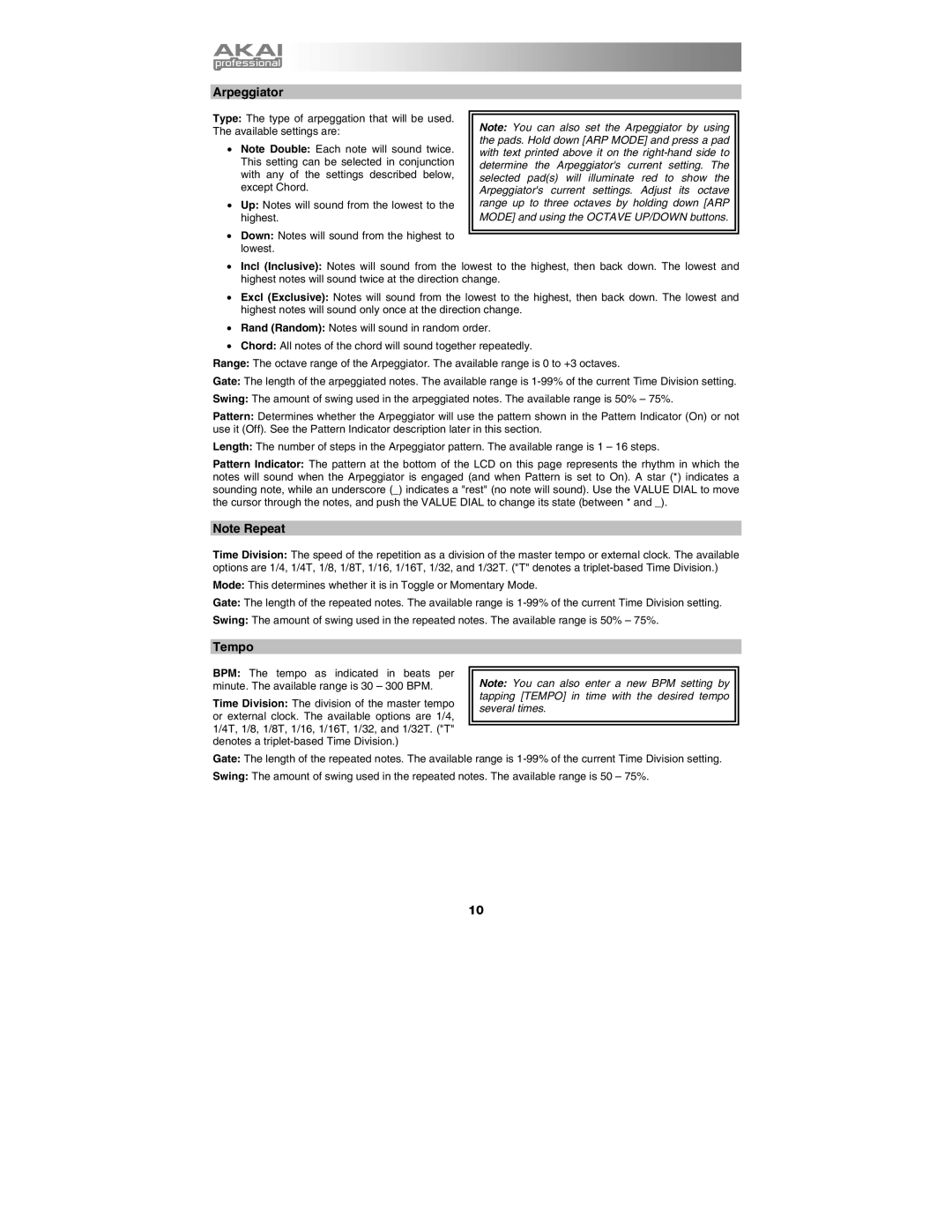
Arpeggiator
Type: The type of arpeggation that will be used. The available settings are:
•Note Double: Each note will sound twice. This setting can be selected in conjunction with any of the settings described below, except Chord.
•Up: Notes will sound from the lowest to the highest.
•Down: Notes will sound from the highest to lowest.
Note: You can also set the Arpeggiator by using the pads. Hold down [ARP MODE] and press a pad with text printed above it on the
•Incl (Inclusive): Notes will sound from the lowest to the highest, then back down. The lowest and highest notes will sound twice at the direction change.
•Excl (Exclusive): Notes will sound from the lowest to the highest, then back down. The lowest and highest notes will sound only once at the direction change.
•Rand (Random): Notes will sound in random order.
•Chord: All notes of the chord will sound together repeatedly.
Range: The octave range of the Arpeggiator. The available range is 0 to +3 octaves.
Gate: The length of the arpeggiated notes. The available range is
Swing: The amount of swing used in the arpeggiated notes. The available range is 50% – 75%.
Pattern: Determines whether the Arpeggiator will use the pattern shown in the Pattern Indicator (On) or not use it (Off). See the Pattern Indicator description later in this section.
Length: The number of steps in the Arpeggiator pattern. The available range is 1 – 16 steps.
Pattern Indicator: The pattern at the bottom of the LCD on this page represents the rhythm in which the notes will sound when the Arpeggiator is engaged (and when Pattern is set to On). A star (*) indicates a sounding note, while an underscore (_) indicates a "rest" (no note will sound). Use the VALUE DIAL to move the cursor through the notes, and push the VALUE DIAL to change its state (between * and _).
Note Repeat
Time Division: The speed of the repetition as a division of the master tempo or external clock. The available options are 1/4, 1/4T, 1/8, 1/8T, 1/16, 1/16T, 1/32, and 1/32T. ("T" denotes a
Mode: This determines whether it is in Toggle or Momentary Mode.
Gate: The length of the repeated notes. The available range is
Swing: The amount of swing used in the repeated notes. The available range is 50% – 75%.
Tempo
BPM: The tempo as indicated in beats per minute. The available range is 30 – 300 BPM.
Time Division: The division of the master tempo or external clock. The available options are 1/4, 1/4T, 1/8, 1/8T, 1/16, 1/16T, 1/32, and 1/32T. ("T" denotes a
Note: You can also enter a new BPM setting by tapping [TEMPO] in time with the desired tempo several times.
Gate: The length of the repeated notes. The available range is
Swing: The amount of swing used in the repeated notes. The available range is 50 – 75%.
10
